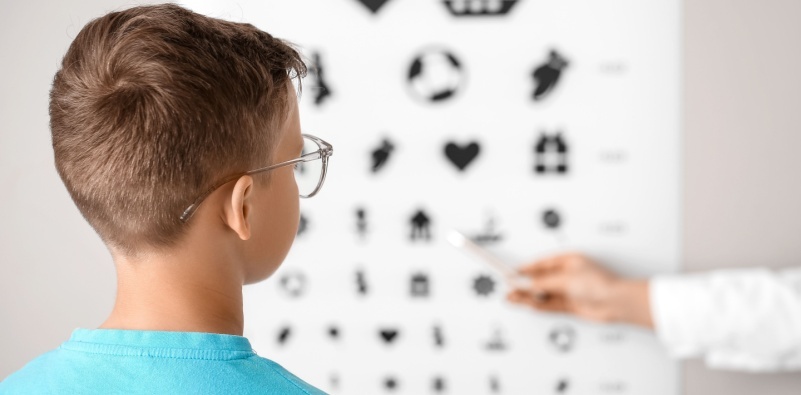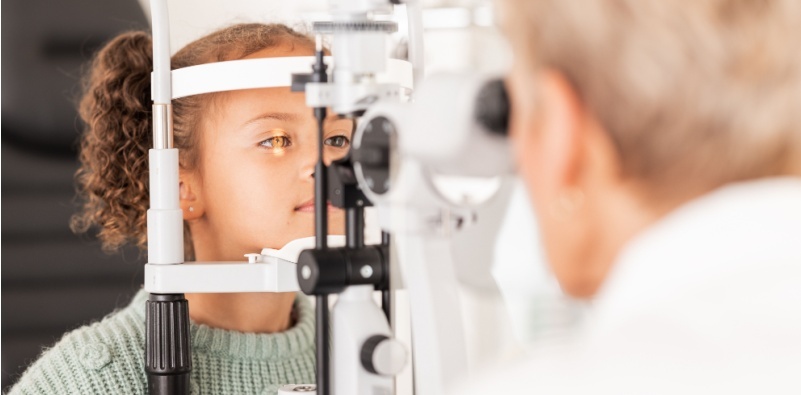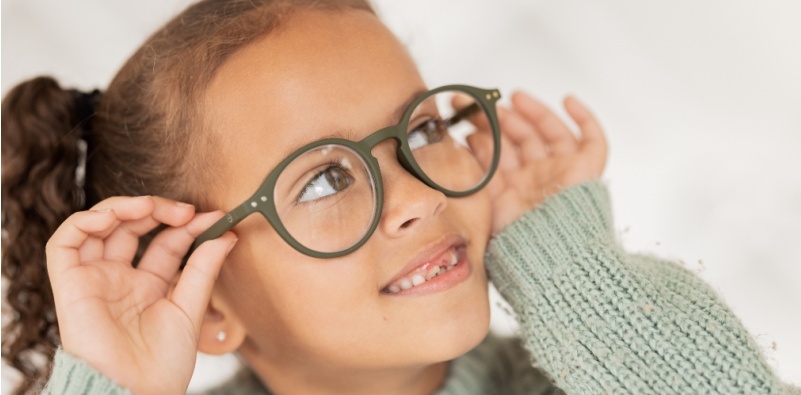Vision is important for learning and development, so it’s a good idea to be aware of common eye conditions that could affect your child. Regular eye exams are essential to ensure your child’s vision is the best it can be, but there are also things you can look out for at home. Read on to learn more.
Symptoms of Eye Conditions in Children

Kids don’t always realise when something is wrong with their vision, especially younger children. It’s thought that 1.6 million children in the UK have an undiagnosed eye condition. Booking a children’s eye test (every year for under 16s and every 2 years for 16-19s unless recommended otherwise) is essential. Below, we have outlined conditions and symptoms to be aware of.
Myopia

Also known as short-sightedness, myopia is primarily caused by an elongation of the eyeball or excessive curvature of the cornea. This prevents light from focusing correctly on the retina and results in distant objects appearing blurry. Myopia has common signs like difficulty reading the board at school, sitting close to the TV, holding books or a tablet close to the face, headaches, and rubbing the eyes. Glasses for short-sightedness are the most common treatment.
Hyperopia
Known more commonly as long-sightedness, hyperopia is primarily caused by a shorter-than-normal eyeball or a flatter cornea, which causes light to focus behind the retina and results in difficulty seeing close objects clearly. Hyperopia can be characterised by a reluctance to read and write, eye strain, tiredness, headaches and complaining of blurred vision. Again, glasses are a common resolution.
Strabismus
Strabismus, or crossed eyes, is when one eye points in a different direction to the other. It’s mainly caused by a disruption in the coordination of the eye muscles, which can result from factors such as muscle imbalances, neurological conditions, or genetic predispositions. It’s fairly obvious to spot, and treatment may be as simple as using an eye patch or glasses.
Amblyopia
Also called lazy eye, this is when one eye is weaker than the other and can wander. This is caused by a lack of clear visual input to one eye during early development. It leads to poor visual acuity in that eye despite its health, typically due to conditions like strabismus or significant refractive errors. You may notice one eye turning in or out, poor depth perception, squinting, or head tilting. Glasses and eye patches are common treatments.
Astigmatism
Astigmatism in children is common when they are infants and usually resolves itself. It’s caused by an irregular shape of the cornea or lens, which prevents light from focusing evenly on the retina and can affect both near and far vision. Other symptoms include light sensitivity, eye rubbing and squinting.
Eye Exams for Children

Regular eye exams are the only way to assess your child’s eye health. Early detection and treatment of these conditions can prevent problems in school and developmental delays, allowing for academic success. It also enhances their social interactions and boosts confidence in sports and other recreational pursuits.
At our opticians in Pinner, we are here to help with children’s eyecare and offer advice and guidance for parents and free NHS eye exams for children. We encourage you to request an appointment for them today.


